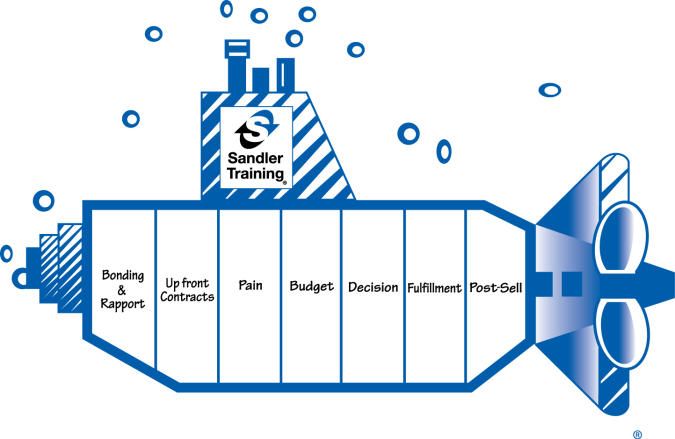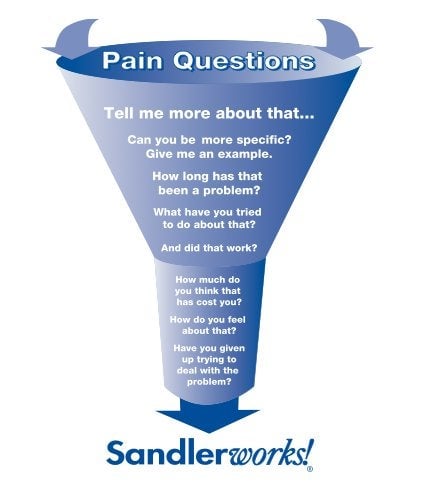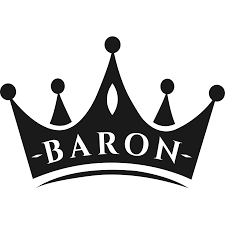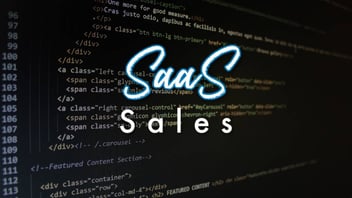-1.jpg)
Before we answer that question, we first have to understand the Sandler sales training system and what it covers.
What is the Sandler Selling System?
The Sandler Training or Sandler Selling System was designed in 1967 by David Sandler, a renowned expert on sales productivity. This strategy focuses on having sales reps act as consultants to their customers rather than pushy salespeople. Rather than asking pointless questions or immediately trying to close the deal, this system encourages sellers to ask questions related directly to the potential client's interests and needs in regards to product support and maintenance so that he/she feels more comfortable placing an order without being coerced into doing so.
The key to this is when you use the Sandler Selling System; it removes the feeling of you being a salesperson and begins to position you as a product expert there to solve their problems. As salespeople, we think we understand why someone may want to buy, but we quickly forget the emotions connected to their decision. By using the Sandler selling system, you begin to dive deeper into why people make the decisions they do.
Sandler Selling System
The Sandler Selling System is broken down into seven sections. Those sections are Bonding & Rapport, upfront contracts, pain, budget, decision, fulfillment, and post sell. The system is contained within a submarine for a variety of reasons.

The Sandler submarine is a great metaphor for its process for several reasons. First is when you become a practitioner of Sandler and being to move away from being a typical salesperson, the selling process should begin to shift. That shift beings to drill down deeper into learning more about your prospect's journey and why they are even thinking about buying from you. When you become good at the process and embody the philosophy, your sales process shouldn't feel like a typical sales process. It becomes much more consultative than a "hey buy my product." This is where the idea of the submarine comes from. It's supposed to be stealthy, and when you're inside a submarine, you cant skip areas to go from the front to the back. One of the largest benefits of the Sandler submarine is diagnosing missed sales afterwords. If you lost the sale, the key to getting better is understanding where you didn't spend enough time on. This allows you to self-diagnose your potential sales mess up as well as gives structure to close deals without skipping steps.
It gives you a great clean sales funnel that's easy to follow time and time again.
Bonding & Rapport
When it comes to relationship building, the first step is to establish a bond with a prospect that encourages open and honest communication. This is the key to any successful relationship, especially in sales. We all know you buy from people you know like and trust. Spending enough time here is crucial to setting yourself up for the rest of the process.
Upfront contracts
The second step is to set an upfront contract. This is a mutual agreement between you and a prospect that there are several things needed from both of you to have a successful interaction. That can be everything from someone's undivided attention as well as dedicating enough time to a meeting to be undisturbed that will allow you both to effectively communicate.
Pain
After creating a bond and building some rapport, it's time to get down to business by uncovering problems. This way, you'll be able to identify what their most pressing issues are and how you can benefit them. This is the hardest part of the process to master because no one likes to be in pain. Sometimes during this process, it can be uncomfortable for you and the client to be discussing issues that may bother someone.
People buy for four reasons.
Pain in the present
Pain in the future
Pleasure in the present
Pleasure in the future.
Because of this, when asking questions to your prospect, it's important that pain will come up, even for the saying of pleasure in the future.
How?
Let's imagine you're selling cruises and someone wants to use you as a travel agent to book their cruise. Of course, they want to go away. But if you ask them why they may respond with, "we don't hang out enough as a family" This is a prime example of selling based on pleasure in the future, but they currently are experiencing pain in the present. They know they don't spend enough time together as a family.
The reason this is the hardest step is that you can't stop at the surface level with sales. You have to dig deep. A doctor can't diagnose an elbow injury if he doesn't ask questions. This is the same concept. Understand the emotions and reasons why someone is looking to purchase your product. In the travel agent example above, if you understand they don't do enough as a family, it's important to take these notes. This can help you recommend products/services in the future that may be family inclusive such as family ziplining, swimming with dolphins, or another activity.
This is a vital step that most salespeople don't spend enough time on, and because of that, it causes them to lose their sales.
Check out the Sandler sales funnel that gives you great questions to ask. When used correctly, they will give you plenty of ways to find pain and understand why they are making the decision.

Budget
The budget is a focus of the qualification phase in the Sandler Selling System. If your prospect can't afford your product, there's no point wasting your time trying to sell it to them. As a qualified sales professional, you know that you'll have prospective clients that, due to their project size or specific needs, might not be able to invest in the most effective solution for their situation.
This is an acceptable outcome because if it doesn't make sense to do business with someone who can't afford your product or solution, it's going to save everyone time, money, and energy. The last thing you want to do is be a pushy salesperson and put them in a situation they can't afford or feel trapped in.
Decision
The last part of qualifying prospects is to talk about decision-making. Find out who makes the decisions, what criteria are used to make those decisions, where and how you can meet with these people, why they're looking to hire your product and how they will evaluate your product. By following this, it will give you a leg up against your competition, as well as find out the other key players that will help drive the final decision in the process.
Fulfillment
This is the last stage of the sales process. In this stage, you now present your product/service as the solution to their problem. Your proposal fulfills all of their requests, including their budget, and helps them decide whether or not to move forward with your idea. Remember to include everything you learned about their needs during the qualifying process in your proposal.
There is a technique I learned from the coaches witch is to meet with the decisions makers when providing the proposal and reiterate all of the pain points you discovered. It's a quick refresh as you go through it and can be used to help drive home why your product is the right fit for their needs. It also shows that you understand their company and what they are looking for on a business and emotional level.
Post sell
At this point, it's a closed deal. Both parties agree to work together, and the deliverables can now be provided.
This is typically where the great sales reps separate from the good sales reps. Post sell isn't just about fulfilling and making sure that your company provides the goods and services that are required. It's a follow-up with your prospect as a check-in. Assuming your company is great and everything is going exactly how they want, this is the time that you can ask for referrals.
The term birds of a feather flock together couldn't apply more to a situation. Business owners hang out with business owners, salespeople hang out with salespeople, and so on. You can use this to your advantage by asking them if they know anyone who is dealing with similar issues. Be open and upfront that you are looking to help more people in similar situations. In all my years of selling the post, sell is the easiest way to fill your pipeline.
Is Sandler Sales Training Worth it?
If you're new to sales or don't already have a sales system in place that you follow, Sandler Sales Training is worth it. It's the best thing you can do for yourself or your team.
Being someone who has spent over a year attending Sandler sales training, I can confidently say that it's amazing training. I came from little sales experience, and attending Sandler, made a massive difference in my career. Going to Sandler sales training helped me transform a one million dollar business into 3 million in two years. It has also allowed me to become friends with many of my clients because I was able to connect with them on an emotional level. The benefits are quite long, but the investment is worth it. The training is great, and while you could learn the whole system in 4-5 months, it's the repetition, practice, and guidance that makes the difference. Most of the people I attended Sandler with quickly rose to be the top sales leaders in their organization.
There are also some benefits that I feel are worth mentioning:
It gets all the salespeople to use the same system, so they all speak the same language
It can help you self diagnose where there was an issue with your sales
It allows you to ask questions that would otherwise feel strange or awkward asking
It allows you to connect with prospects on a much deeper level than salesperson and prospect.
Gave confidence to executives to help drive a better sales organization.
It gives everyone a commons sales language to use
What Sandler Sales Training Lacks.
While Sandler's sales training is amazing, there are some holdups. They do teach you how to do business development for your company. However, they don't teach you how to be a business development expert. They do teach you how to be a sales expert and close opportunities that come your way. There are tons of great takeaways on the course, but many of them are a blend of old-school and new school. There aren't any cutting-edge techniques. They cover everything from cold calling to prospecting on LinkedIn. Their strategies are amazing. I use them regularly; however, they don't include things like email, text follow-up, or automation. They also don't mention ways to get the marketing team involved to warm up a lead before passing it off to a sales rep.
Conclusion
My personal opinion on the training is top notch. I learned skills and ideas that have allowed me to be not only a better business person but has helped me in my personal life as well. The concepts they teach in the course are timeless and that I believe is where most of the value comes into play. Even after not being in the course I use many of those skills everyday and if you're a business owner or sales person looking to close more deals its some of the best training money can buy. If you're looking to join Sandler or at least just want to see what they are all about feel free to reach out to my Coaches Rich Issac and Rob Fishman. Feel free to let them know I sent you.
Connect with us on LinkedIn!
If you have more questions about sales training and want to speak to me personally feel free to send me a message on the contact page I am always looking for suggestions or ideas to write about!





